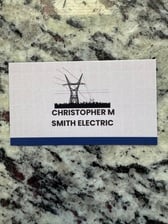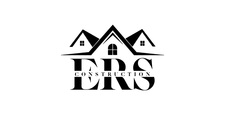
Get matched with top ceiling fan pros in East Boston, MA
There are 9 highly-rated local ceiling fan pros.
Need a pro for your ceiling fan service project in East Boston, MA?
TRUSTED BY EAST BOSTON, MA HOMEOWNERS
3.9
Average homeowner rating25
Verified ceiling fan services reviews
Verified Reviews for Ceiling Fan Service pros in East Boston, MA
*The Angi rating for Ceiling Fan Service companies in East Boston, MA is a rating based on verified reviews from our community of homeowners who have used these pros to meet their Ceiling Fan Service needs.
*The HomeAdvisor rating for Ceiling Fan Service companies in East Boston, MA is a rating based on verified reviews from our community of homeowners who have used these pros to meet their Ceiling Fan Service needs.
Last update on December 09, 2025
Find Ceiling fan pros in East Boston

Brandon Phillips Electric
Brandon Phillips Electric
CALL ME DIRECTLY AT 857-204-2802!! I’ve been in the trade for 17 years and I’m a member of the International Brotherhood of Electrical Workers. I’m fully licensed and insured. At Phillips Electrical we take on a wide range of residential and commercial projects that include level 2 car chargers, wiring additions, panel upgrades, recess lighting, service upgrades, and a variety of other projects. We take pride in the quality of our work at the best price possible and our commitment to outstanding results. We look forward to building strong, long-term relationships with our clients and guarantee your satisfaction. Feel free to call me at 857-204-2802 for a free estimate.
"Hired Brandon to install some appliance outlets. He was prompt, systematic, prepared, and transparent. Very professional in his interactions. Will hire again if we need more work done."
Esteban C on December 2024
CALL ME DIRECTLY AT 857-204-2802!! I’ve been in the trade for 17 years and I’m a member of the International Brotherhood of Electrical Workers. I’m fully licensed and insured. At Phillips Electrical we take on a wide range of residential and commercial projects that include level 2 car chargers, wiring additions, panel upgrades, recess lighting, service upgrades, and a variety of other projects. We take pride in the quality of our work at the best price possible and our commitment to outstanding results. We look forward to building strong, long-term relationships with our clients and guarantee your satisfaction. Feel free to call me at 857-204-2802 for a free estimate.
"Hired Brandon to install some appliance outlets. He was prompt, systematic, prepared, and transparent. Very professional in his interactions. Will hire again if we need more work done."
Esteban C on December 2024

NETR Inc
NETR Inc
For emergency services, please call 781-933-6387. N.E.T.R., Inc. is here to help homeowners install the best heating and cooling systems that fits their needs. Since 1989, we’ve installed heating and cooling systems in Boston and its surrounding areas, tackling tough problems that our clients face. Our goal is to ensure our clients have energy efficient, quiet, reliable systems so they can live their lives to the fullest both at home and at work. Our dedication to our customers’ needs is what drives us each and every day. Our approach to temperature control and comfort has helped us become one of the most respected names in heating, cooling, and refrigeration in New England
"Before installing a mini-split, the sales person told me that I'd need to cut down an interior shelf to a specific height. I paid a handyman $400 to do exactly what the sales person instructed. Later on, N.E.T.R. came and did the installation; however, AFTER the installation, a technician told me that they hadn't accounted for the vent opening and closing and that the shelf would need to be further cut down. As you can imagine, this type of service is rather ridiculous. If they knew that the shelf would need further cutting, they should have NOT installed the unit. I have called N.E.T.R. six (6) times in three weeks, and no one has called me back about this issue. After paying for the unit and for a handyman, it's ridiculous that I have AC that is compromised because no one with the company thought to properly measure the space so that the work by the handyman could be done once. At this point, I'd like for N.E.T.R. to take care of this for me."
Linda O on June 2025
For emergency services, please call 781-933-6387. N.E.T.R., Inc. is here to help homeowners install the best heating and cooling systems that fits their needs. Since 1989, we’ve installed heating and cooling systems in Boston and its surrounding areas, tackling tough problems that our clients face. Our goal is to ensure our clients have energy efficient, quiet, reliable systems so they can live their lives to the fullest both at home and at work. Our dedication to our customers’ needs is what drives us each and every day. Our approach to temperature control and comfort has helped us become one of the most respected names in heating, cooling, and refrigeration in New England
"Before installing a mini-split, the sales person told me that I'd need to cut down an interior shelf to a specific height. I paid a handyman $400 to do exactly what the sales person instructed. Later on, N.E.T.R. came and did the installation; however, AFTER the installation, a technician told me that they hadn't accounted for the vent opening and closing and that the shelf would need to be further cut down. As you can imagine, this type of service is rather ridiculous. If they knew that the shelf would need further cutting, they should have NOT installed the unit. I have called N.E.T.R. six (6) times in three weeks, and no one has called me back about this issue. After paying for the unit and for a handyman, it's ridiculous that I have AC that is compromised because no one with the company thought to properly measure the space so that the work by the handyman could be done once. At this point, I'd like for N.E.T.R. to take care of this for me."
Linda O on June 2025
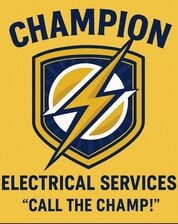
Champion Electrical Services Inc
Champion Electrical Services Inc
At Champion Electrical Services, we believe homeowners deserve better. No more no-shows, rushed work, or upsells you don't need. We built this company to do things right?with respect, craftsmanship, and pride. Every job gets treated like it's our own home: clean, code-compliant, and built to last. Whether you need a panel upgrade, EV charger, generator, or quick repair, we show up when it counts and earn your trust every time. Licensed, insured, and proudly serving MA & RI. When the lights go out, don't call just anyone? Call the Champ. ? (774) 331-3500 | ? CalltheChamp.com | ? [email protected]
"Mike was very professional. Explained what and why things needed to be done. Was on time and cleaned up after his work in our living room. I would highly recommend him."
Lew R on November 2025
At Champion Electrical Services, we believe homeowners deserve better. No more no-shows, rushed work, or upsells you don't need. We built this company to do things right?with respect, craftsmanship, and pride. Every job gets treated like it's our own home: clean, code-compliant, and built to last. Whether you need a panel upgrade, EV charger, generator, or quick repair, we show up when it counts and earn your trust every time. Licensed, insured, and proudly serving MA & RI. When the lights go out, don't call just anyone? Call the Champ. ? (774) 331-3500 | ? CalltheChamp.com | ? [email protected]
"Mike was very professional. Explained what and why things needed to be done. Was on time and cleaned up after his work in our living room. I would highly recommend him."
Lew R on November 2025
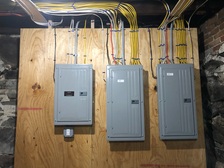
Carmen Colella Electric
Carmen Colella Electric
We pride our company on reliability, great communication, integrity, and quality work. We are experts in our trade and will do our best to keep you as educated as we can on your particular task or project. We look forward to earning your business!
"Carmen and his team did a great job on helping me upgrade my panel as well as change my meter box. I also had an old wooden mast that they changed out and replaced with a much nicer modern fixture which was great. My house was old and I actually bought it many years ago as a forclosure renovation. So some of the previous work was old and not done correctly. Carmen, Shawn and his team were great to work with. I was worried that no one would take the job because the previous owner had not done a great job. Carmen and his team dived in and made all of the main wiring to the house beautiful and secure and safe. I would use them again for any electrical work big or small. In addition I would add his team comes very well prepared. They have every tool imaginable for the job and are ready to go. I am so happy I choose them. A local neighbor recommended him to me. I looked at their breaker panel and liked how neatly it was done. Thats why I choose Carmen."
Kenneth S on April 2025
We pride our company on reliability, great communication, integrity, and quality work. We are experts in our trade and will do our best to keep you as educated as we can on your particular task or project. We look forward to earning your business!
"Carmen and his team did a great job on helping me upgrade my panel as well as change my meter box. I also had an old wooden mast that they changed out and replaced with a much nicer modern fixture which was great. My house was old and I actually bought it many years ago as a forclosure renovation. So some of the previous work was old and not done correctly. Carmen, Shawn and his team were great to work with. I was worried that no one would take the job because the previous owner had not done a great job. Carmen and his team dived in and made all of the main wiring to the house beautiful and secure and safe. I would use them again for any electrical work big or small. In addition I would add his team comes very well prepared. They have every tool imaginable for the job and are ready to go. I am so happy I choose them. A local neighbor recommended him to me. I looked at their breaker panel and liked how neatly it was done. Thats why I choose Carmen."
Kenneth S on April 2025
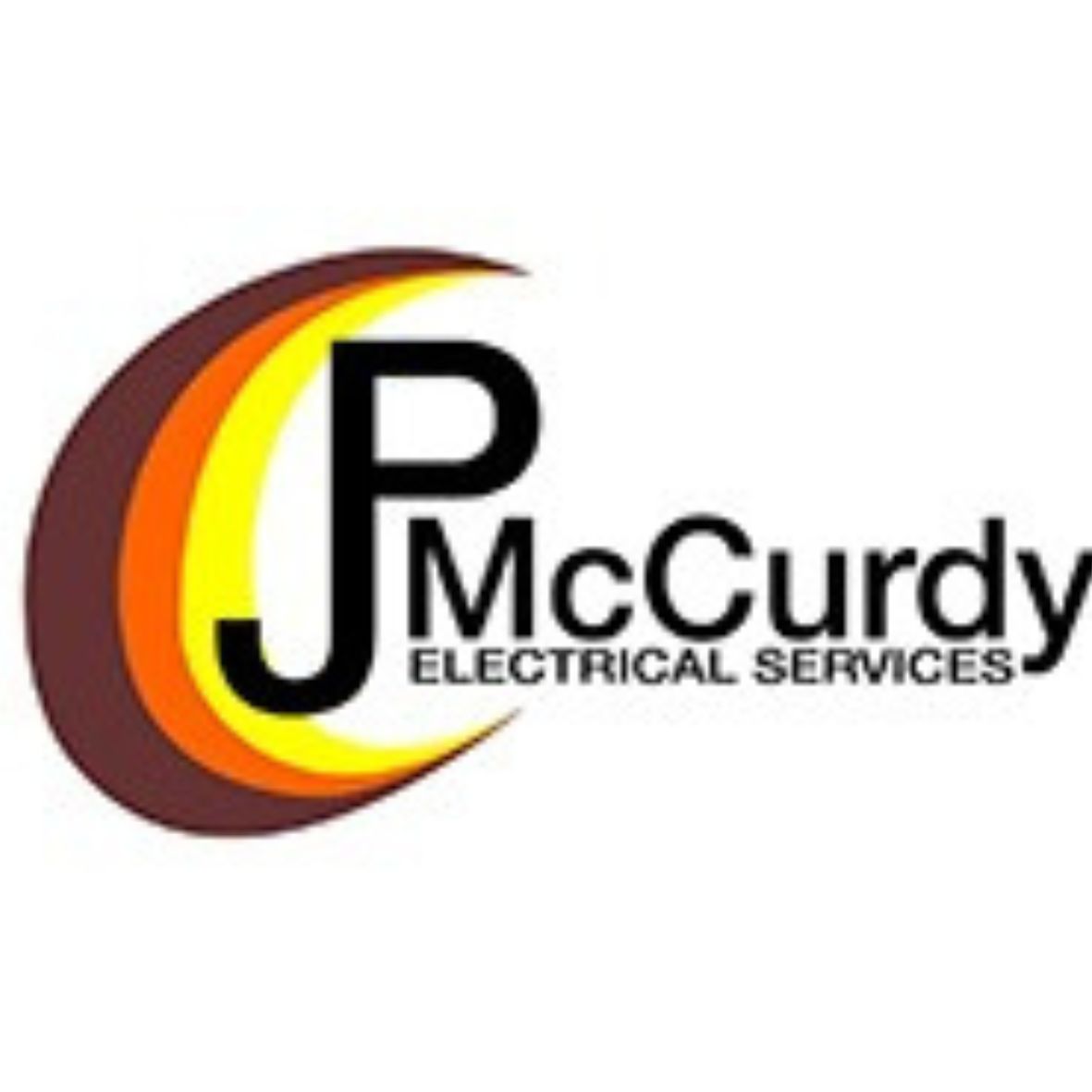
JP McCurdy Electrical Services Inc
JP McCurdy Electrical Services Inc
We are your solution to everything electrical! From your everyday electrical construction and repair items to the design of a complete integrated home system from the ground up and more! McCurdy Electric - call for peace of mind - we'll do the rest. Our trained and certified team of Electricians bring many years of experience to meet every one of your electrical projects. We stay ahead of the curve in custom installation and design of specialty electronic items, such as generator systems, smart home technology, advanced lighting control, Audio/Video, alarm, video surveillance, and much more. We can help you with all of your Electrical needs, and we have the track record to back it up. Please visit our website at www.McCurdyElectric.com for more information. Call for Peace of Mind. We'll Do the Rest.
"Excellent communication and resposiveness throughout. Proactively met with electrical inspector to share plan. High quality work performed--highly recommend."
Joe G on November 2025
We are your solution to everything electrical! From your everyday electrical construction and repair items to the design of a complete integrated home system from the ground up and more! McCurdy Electric - call for peace of mind - we'll do the rest. Our trained and certified team of Electricians bring many years of experience to meet every one of your electrical projects. We stay ahead of the curve in custom installation and design of specialty electronic items, such as generator systems, smart home technology, advanced lighting control, Audio/Video, alarm, video surveillance, and much more. We can help you with all of your Electrical needs, and we have the track record to back it up. Please visit our website at www.McCurdyElectric.com for more information. Call for Peace of Mind. We'll Do the Rest.
"Excellent communication and resposiveness throughout. Proactively met with electrical inspector to share plan. High quality work performed--highly recommend."
Joe G on November 2025

DiOrio Builders & Designers Inc
DiOrio Builders & Designers Inc
DiOrio Builders and Designers Inc. is a fully licensed and insured company committed to providing homeowners with the highest level of craftsmanship. Built on old fashioned values we are experienced specialists that will complete your project to exact specifications in a timely manner. Quality work is our priority while paying special attention to detail. No job is too big or too small.
"They gave a good estimate of work to be completed and contract laid everything out clearly and completely. They were well organized and had great communication. They kept the job site clean each day and the work was well done."
Melissa C on October 2025
DiOrio Builders and Designers Inc. is a fully licensed and insured company committed to providing homeowners with the highest level of craftsmanship. Built on old fashioned values we are experienced specialists that will complete your project to exact specifications in a timely manner. Quality work is our priority while paying special attention to detail. No job is too big or too small.
"They gave a good estimate of work to be completed and contract laid everything out clearly and completely. They were well organized and had great communication. They kept the job site clean each day and the work was well done."
Melissa C on October 2025
ElectriChris, Inc
ElectriChris, Inc
Welcome to the world headquarters for ElectriChris Inc! We offer both residential and commercial electrical services for the greater Boston area. From outlets & fixtures, to panel upgrades and wire installations, we do it all. Owner Chris David has over 20 years on hands on electrical experience and has the knowledge to handle your project with ease. Call us today for an estimate!
"Excellent service, communicates about arrival time, and a great guy! I will hire him again when needed."
Abigail V on April 2025
Welcome to the world headquarters for ElectriChris Inc! We offer both residential and commercial electrical services for the greater Boston area. From outlets & fixtures, to panel upgrades and wire installations, we do it all. Owner Chris David has over 20 years on hands on electrical experience and has the knowledge to handle your project with ease. Call us today for an estimate!
"Excellent service, communicates about arrival time, and a great guy! I will hire him again when needed."
Abigail V on April 2025

128 Plumbing Heating Cooling & Electric
128 Plumbing Heating Cooling & Electric
For over 30 years, 128 Plumbing, Heating, Cooling & Electric has provided the highest quality, efficiency and reliability to customers. Celebrating thousands of five-star reviews online and an A+ Rating on BBB for years, the company has become the North Shore’s most trusted and consistent plumber, heating and air conditioning, and electrical service company. The company takes pride in the title as a Diamond Elite Contractor with Mitsubishi Electric and being selected into the National Grid VPI Program. Finally, a company that picks up the phone every time with manufacturer-trained technicians and a commitment to providing customers with an easy, effortless customer service experience. You're guaranteed to be left with the service and price you were quoted with customized options for what's best for your home in the long-term. 128 Plumbing, Heating, Cooling & Electric specializes in Installation, Service, and Repair for Boilers, Furnaces, Air Conditioners and HVAC Systems, Tankless Water Heaters, Ductless Mini-Splits and Plumbing. Worried about the cost of your next project? We have options to help you get your repairs on the way! Unfortunately, emergencies don’t wait until you have all of your financial ducts in a row.
"Election did an excellent job installing a new ac outlet for new dishwasher Definitely use again"
Bruce R on July 2025
For over 30 years, 128 Plumbing, Heating, Cooling & Electric has provided the highest quality, efficiency and reliability to customers. Celebrating thousands of five-star reviews online and an A+ Rating on BBB for years, the company has become the North Shore’s most trusted and consistent plumber, heating and air conditioning, and electrical service company. The company takes pride in the title as a Diamond Elite Contractor with Mitsubishi Electric and being selected into the National Grid VPI Program. Finally, a company that picks up the phone every time with manufacturer-trained technicians and a commitment to providing customers with an easy, effortless customer service experience. You're guaranteed to be left with the service and price you were quoted with customized options for what's best for your home in the long-term. 128 Plumbing, Heating, Cooling & Electric specializes in Installation, Service, and Repair for Boilers, Furnaces, Air Conditioners and HVAC Systems, Tankless Water Heaters, Ductless Mini-Splits and Plumbing. Worried about the cost of your next project? We have options to help you get your repairs on the way! Unfortunately, emergencies don’t wait until you have all of your financial ducts in a row.
"Election did an excellent job installing a new ac outlet for new dishwasher Definitely use again"
Bruce R on July 2025

AVT Electric, LLC
AVT Electric, LLC
I pride myself on my professionalism, as well as my ability to complete every job to the homeowner's total satisfaction. I never leave a job unfinished, or a homeowner not 100% satisfied with my level of service - Call today!
"The electrical installation work was fast and the quality was good. Keep up the good work!"
PJ C on November 2025
I pride myself on my professionalism, as well as my ability to complete every job to the homeowner's total satisfaction. I never leave a job unfinished, or a homeowner not 100% satisfied with my level of service - Call today!
"The electrical installation work was fast and the quality was good. Keep up the good work!"
PJ C on November 2025
Daniel Provost Electric
Daniel Provost Electric
At Daniel Provost Electric, we take great pride in the experience, expertise, quality, and customer service that we provide. It is our mission to provide excellent customer satisfaction from the start to the completion of a project. Our reputation is based on service, safety, and quality, regardless of how large or small the job.
"Daniel Provost was great! He got back to us right away & was very accommodating to schedule. Daniel was professional and personable. He explained things to us quite clearly. His honesty and reasonable price make Daniel someone I would absolutely recommend."
Karen C on May 2023
At Daniel Provost Electric, we take great pride in the experience, expertise, quality, and customer service that we provide. It is our mission to provide excellent customer satisfaction from the start to the completion of a project. Our reputation is based on service, safety, and quality, regardless of how large or small the job.
"Daniel Provost was great! He got back to us right away & was very accommodating to schedule. Daniel was professional and personable. He explained things to us quite clearly. His honesty and reasonable price make Daniel someone I would absolutely recommend."
Karen C on May 2023
The East Boston, MA homeowners’ guide to ceiling fan services
From average costs to expert advice, get all the answers you need to get your job done.

If your ceiling fan stops working due to a bad motor or broken pull chain, here’s what you can expect to pay to get it fixed.
 •
•Discover the cost to install a ceiling fan, including labor, materials, and tips to save. Learn what impacts your price and how to budget for your project.

Learn how to wire a ceiling fan with a light directly from a power source or wall switch and add a convenient remote control. Follow this step-by-step guide.

Ceiling fans should run fairly quietly. Learn about the causes of excessive rattling, clicking, or other odd sounds and how to fix your noisy ceiling fan.

With the right size, ceiling fans are an energy-efficient way to cool a room. Use this ceiling fan size guide to find the perfect model for your space.

Looking to cool down a room or get some more air flowing throughout the house? Learn how to install a ceiling fan without existing wiring.
- Chelsea, MA Ceiling fan pros
- Winthrop, MA Ceiling fan pros
- Revere, MA Ceiling fan pros
- Everett, MA Ceiling fan pros
- South Boston, MA Ceiling fan pros
- Malden, MA Ceiling fan pros
- Cambridge, MA Ceiling fan pros
- Somerville, MA Ceiling fan pros
- Mission Hill, MA Ceiling fan pros
- Saugus, MA Ceiling fan pros
- Medford, MA Ceiling fan pros
- Charlestown, MA Ceiling fan pros
- Brighton, MA Ceiling fan pros
- Roxbury, MA Ceiling fan pros
- Nahant, MA Ceiling fan pros
- Melrose, MA Ceiling fan pros
- Allston, MA Ceiling fan pros
- Brookline Village, MA Ceiling fan pros
- Brookline, MA Ceiling fan pros
- Dorchester, MA Ceiling fan pros
- Lynn, MA Ceiling fan pros
- Watertown, MA Ceiling fan pros
- Stoneham, MA Ceiling fan pros
- Arlington, MA Ceiling fan pros
- Winchester, MA Ceiling fan pros
- Quincy, MA Ceiling fan pros
- Belmont, MA Ceiling fan pros
- Swampscott, MA Ceiling fan pros
- Mattapan, MA Ceiling fan pros
- 🌱 "Mow a small front yard"
- 🛠 "Fix a leaking pipe under the sink"
- 🏠 "Repair shingles on an asphalt roof"

